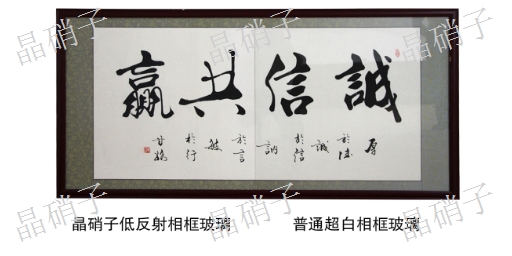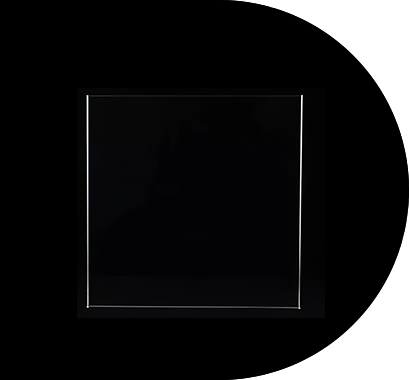Understanding Low Reflection Photo Frame Glass
Low reflection photo frame glass is designed to minimize glare and visual distortion caused by light reflection on the glass surface. Unlike standard glass, which reflects a significant portion of ambient light, this specialized glass allows more light to pass through, resulting in a clearer and more accurate view of the framed content. It is commonly used in framing photographs, artwork, and certificates where visual quality is a top priority.

How Low Reflection Glass Differs from Regular Glass
Light Transmission and Reflection
The most important distinction lies in how each type of glass interacts with light. Regular glass typically reflects 8–10% of light, causing unwanted glare and mirror-like reflections. Low reflection glass, by contrast, reflects less than 1% due to a fine anti-reflective coating that alters the way light waves behave on the surface. This coating allows up to 98% of light to pass through, ensuring colors appear more vibrant and details remain sharp.
Surface Coating Technology
Low reflection glass achieves its optical clarity through thin, transparent coatings applied via vacuum deposition or chemical vapor processes. These coatings are precisely engineered to cancel out reflective wavelengths through interference. Standard glass lacks such surface treatment, which is why it produces noticeable glare under direct light. Depending on the manufacturer, coatings may be applied to one or both sides to enhance performance under different lighting environments.
Color Fidelity and Visual Experience
Another major difference lies in how accurately the glass reproduces colors. Regular glass can slightly tint images due to its natural greenish hue, especially at thicker dimensions. Low reflection glass eliminates this tint, delivering neutral color tones and enhancing the depth and realism of displayed artwork or photos. This is especially critical for professional photography exhibitions and art galleries.
Performance Comparison Overview
| Property | Regular Glass | Low Reflection Glass |
| Light Reflection | 8–10% | Below 1% |
| Light Transmission | 85–90% | 96–98% |
| Color Tint | Slight green hue | Neutral and color-true |
| Viewing Clarity | Moderate, affected by glare | High clarity with reduced glare |
Practical Applications and Benefits
Low reflection photo frame glass is widely used where visibility and aesthetics are critical. It enhances viewing comfort and reduces eye strain by eliminating distracting reflections. This makes it suitable for professional art framing, high-end photography, museum displays, and interior décor installations with bright ambient lighting. In retail environments, it allows displayed items to appear vivid and true-to-life, improving presentation quality.
- Ideal for gallery and museum displays where light reflection compromises viewing.
- Enhances visibility of fine details in photos, paintings, or documents.
- Improves color fidelity, ensuring artwork appears as intended.
- Provides a clean, premium appearance with minimal visual interference.
Considerations When Choosing Low Reflection Glass
While low reflection glass offers superior optical performance, it typically comes at a higher cost compared to regular glass. Its coating can also be more sensitive to abrasive cleaning materials, requiring care during maintenance. However, for applications prioritizing visual presentation and image integrity, its benefits outweigh these considerations. Many versions also incorporate UV protection, adding an extra layer of defense for valuable artworks and photographs.
Conclusion: Clarity and Precision in Every Display
Low reflection photo frame glass delivers a clear advantage over regular glass by reducing glare, improving light transmission, and maintaining accurate color reproduction. Whether used in fine art exhibitions, home décor, or commercial displays, it ensures that the focus remains on the content itself—not on distracting reflections. Its technical precision transforms framed pieces into visually engaging and professional presentations.





